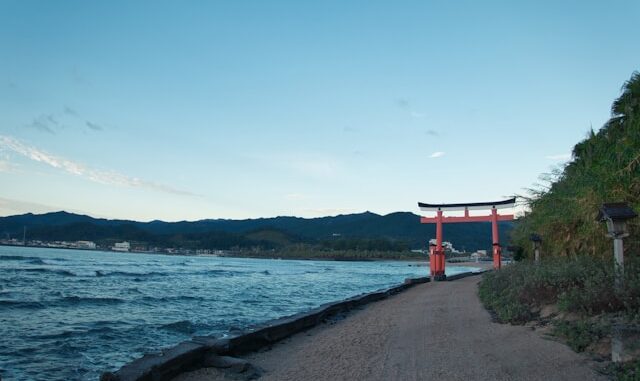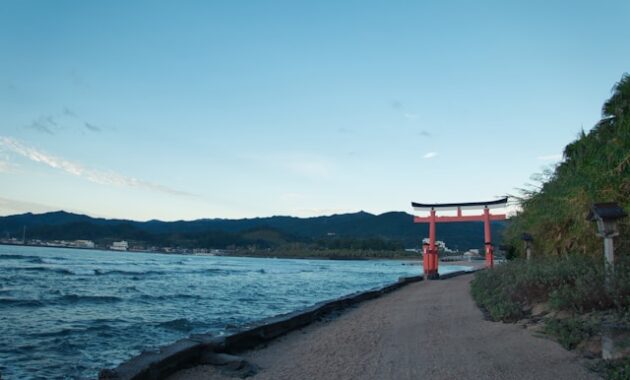
Nestled in the heart of Kyushu Island, Miyazaki Prefecture offers one of the most immersive natural experiences in all of Southern Japan. With its lush forested hills, mystic shrines, and winding trails that whisper tales of ancient mythology, trekking through Miyazaki is not just an activity—it is a journey into the soul of Japan’s wild beauty. Whether you’re a seasoned hiker or a curious traveler seeking tranquility, this guide will help you explore the most breathtaking routes and hidden gems of Miyazaki’s forested landscapes.
Why Trekking in Miyazaki is Unforgettable

Miyazaki’s geography is characterized by dense forests, cascading rivers, volcanic ridgelines, and untouched coastal cliffs. This diversity makes it a paradise for hikers. What sets it apart from more popular regions like Kyoto or Hakone is its untamed beauty and lack of heavy tourist traffic. Here, nature still feels sacred and personal.
From the moss-laden cedar groves of Takachiho to the dramatic sea-facing cliffs of Cape Toi, the region offers a palette of natural wonders waiting to be discovered. Add in the region’s rich Shinto heritage, and every trail feels spiritually charged.
Top Trekking Trails in Miyazaki
1. Takachiho Gorge and Surrounding Trails
Arguably one of Miyazaki’s most iconic locations, Takachiho Gorge is a must-visit. Carved by the Gokase River, the gorge boasts sheer cliffs of volcanic basalt, emerald waters, and the legendary Manai Falls.
- Length: 3.5 km round-trip
- Difficulty: Easy
- Highlights: Manai Falls, boat ride under the cliffs, sacred shrines nearby
While the gorge trail is short, adjacent trails lead into forested hills offering longer hikes through myth-rich terrain. Nearby is the Takachiho Shrine, a serene stop steeped in Japanese mythology.
2. Mt. Takachiho-no-Mine: The Mythical Ascent
This mountain is believed to be where Ninigi-no-Mikoto, the grandson of the sun goddess Amaterasu, descended to earth. The hike itself is not overly long but steep and symbolic.
- Length: 5 km
- Difficulty: Moderate to challenging
- Highlights: Crater views, heavenly scenery, mythological significance
Trekking this sacred peak is a spiritual journey. The summit offers sweeping views over the Kirishima Mountains and the southern plains of Miyazaki.
3. Aoshima Island and Subtropical Coastal Trails
Located near Miyazaki City, Aoshima Island is famous for its “Devil’s Washboard” rock formations and subtropical vegetation.
- Length: 1.5–2 km loop
- Difficulty: Easy
- Highlights: Coastal views, botanical garden, shrine in the island’s heart
Beyond the island, a coastal walking trail stretches along Aoshima Beach, offering dramatic ocean vistas and connecting to other seaside lookouts.
4. Heiwadai Park and Haniwa Garden Trails
Set on a hill in Miyazaki City, Heiwadai Park combines tranquil forest paths with ancient cultural artifacts.
- Length: 3–4 km within the park
- Difficulty: Easy
- Highlights: Peace Tower, Haniwa statues, panoramic city views
This is a perfect urban escape with historic charm and botanical beauty. The Haniwa Garden, with hundreds of clay warrior statues nestled along forest trails, offers a surreal and meditative hike.
5. Cape Toi: The Wild Horses and Ocean Cliffs
Located at the southern tip of Miyazaki Prefecture, Cape Toi is home to Misaki horses, a rare breed that roams freely across the grassy hills.
- Length: Varies (up to 6 km of trail networks)
- Difficulty: Easy to moderate
- Highlights: Pacific Ocean cliffs, lighthouse, wild horses, seasonal flowers
The coastal trails offer stunning views of the Pacific, often blanketed in mist that gives the entire cape a mystical atmosphere. It’s also a prime spot for sunrise treks.
Best Seasons for Trekking in Miyazaki
Spring (March–May) and autumn (October–November) are the optimal seasons for hiking in Miyazaki. Spring brings blooming cherry blossoms and azaleas, while autumn covers the hills in vivid red and gold foliage. Summers can be hot and humid, though higher elevations remain pleasant. Winter offers peaceful solitude with mild temperatures, especially along coastal and low-altitude routes.
Essential Gear and Travel Tips
- Footwear: Sturdy, waterproof hiking shoes are essential. Many trails are rocky and occasionally muddy.
- Clothing: Breathable layers for warm days and sudden weather shifts, especially in the mountains.
- Navigation: Download offline maps or use hiking apps, as some remote areas have limited signal.
- Language: English is not widely spoken in rural areas; having basic Japanese phrases or a translation app helps.
- Transport: Rent a car if possible. While buses reach major destinations, the most scenic spots are often off the beaten path.
- Respect Nature: Many trails pass through sacred or environmentally sensitive zones. Stick to marked paths and pack out all trash.
Cultural Etiquette on the Trail
Miyazaki’s trails are deeply tied to Shinto and Buddhist traditions. You may come across small shrines, torii gates, or stone guardians (jizo) along the way. It is customary to bow slightly when passing these sacred markers. Always maintain a respectful demeanor, keep noise to a minimum, and avoid straying into shrine boundaries unless signage permits.
Where to Stay: Top Accommodation Options for Hikers
- Takachiho Ryokan – Traditional inn near the gorge with tatami rooms and local cuisine.
- Kirishima Onsen Retreats – Mountain lodges perfect after a long trek.
- Miyazaki City Hotels – Urban base with easy access to Aoshima and Heiwadai.
- Cape Toi Guesthouses – Simple stays offering ocean views and fresh seafood.
Local Cuisine to Refuel Your Trek
- Chicken Nanban – Miyazaki’s famous fried chicken with tartar sauce.
- Miyazaki Beef – Among Japan’s finest wagyu, ideal after a tough hike.
- Hyuganatsu Citrus – Refreshing local fruit, especially good in spring.
- Charcoal-grilled Skewers (Sumibiyaki) – Popular among hikers and locals alike.
Don’t forget to stop at rural farmers’ markets for fresh rice balls, local vegetables, and herbal teas perfect for a trail-side break.
Final Thoughts: A Trekking Experience Beyond the Ordinary
Miyazaki Prefecture offers more than a scenic escape—it delivers a profound connection to Japan’s nature and spirituality. Whether you’re tracing mythological paths or wandering through cedar forests where the only sound is birdsong, trekking in this lush corner of Southern Japan is a transformative experience. From mystical shrines to wild horse-dotted cliffs, every step here tells a story older than time.
Plan your adventure wisely, tread respectfully, and let Miyazaki’s hills show you a quieter, deeper side of Japan.